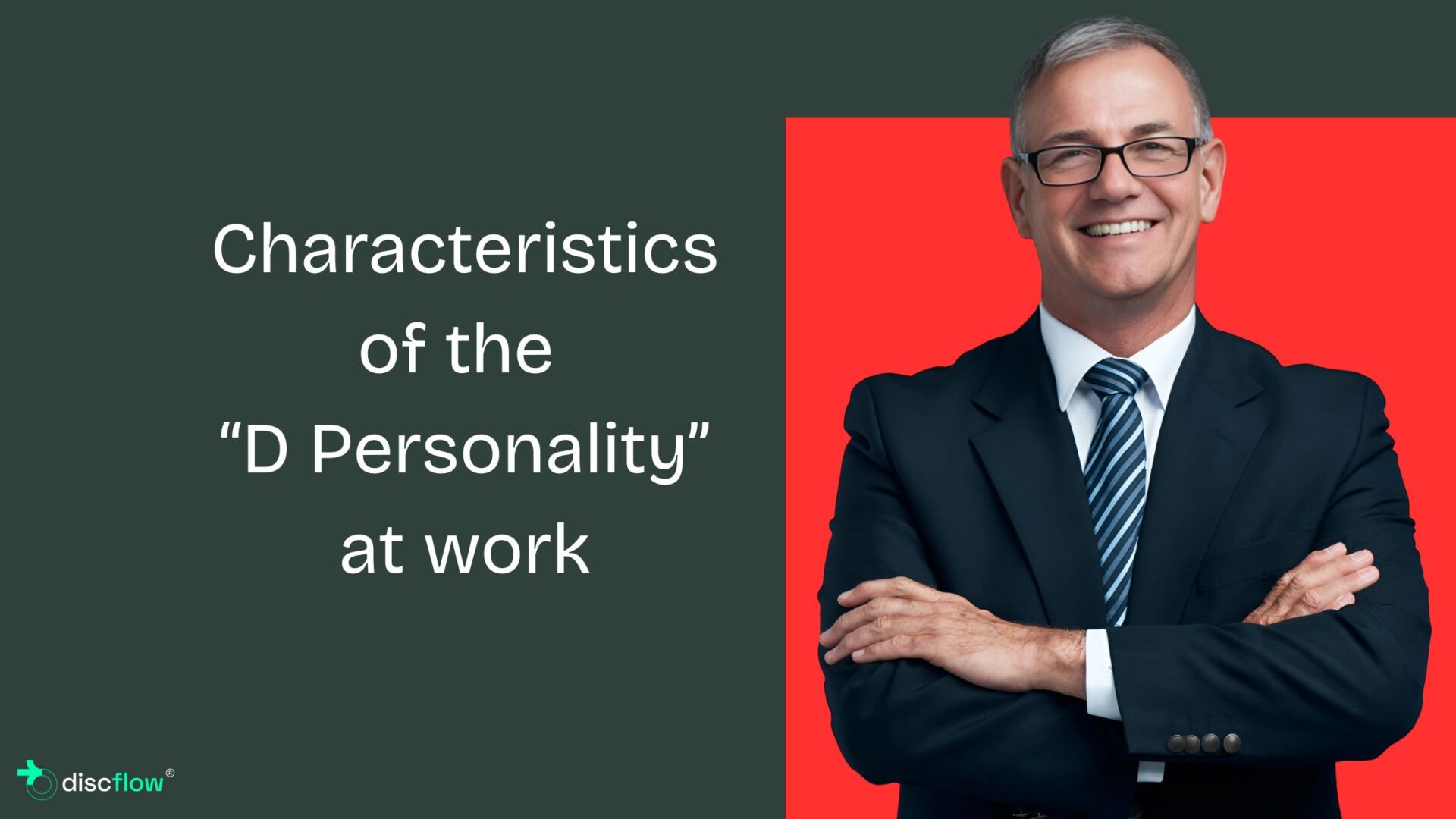If you work with someone who embodies the Dominance (D) personality type from the DISC model, you might notice their bold, results-driven approach. But what does this mean for collaborating with them in the workplace? Understanding the D personality can transform how you work together, whether you’re a leader, co-worker, or team member. At Discflow, we specialize in helping teams harness DISC insights to build stronger, more productive workplaces—let’s dive into what makes D types tick and how to thrive alongside them.
DISC: An Overview
In 1928, Dr. William Moulton Marston introduced DISC theory in his book Emotions of Normal People, categorizing behavioral styles into four personality types. While Marston laid the groundwork, it was industrial psychologist Walter Clarke in the 1950s who developed the first DISC assessment for workplace use. Today, the DISC model remains a proven tool to understand personality dynamics:
- Dominance (D): Direct and results-focused, D types are problem-solvers who prioritize outcomes.
- Influence (I): Energetic and sociable, I types excel at motivating teams and building connections.
- Steadiness (S): Reliable and calm, S types thrive in harmonious settings and support others.
- Compliance (C): Analytical and detail-oriented, C types focus on precision and independent work.
At Discflow, our DISC assessments reveal whether someone is a “high D” (purely Dominance) or a blend like DI or DC, helping teams understand each other better. To learn more, check out our blog: What is the DISC assessment?
Characteristics of the D Personality at work
D types are easy to spot in the workplace—think of the colleague who’s always pushing for results, making quick decisions, and taking charge. Their traits often start with D: direct, demanding, dominant, decisive, and driven. They’re ambitious, confident, and thrive on challenges, often taking risks if they see a payoff. Change doesn’t faze them as long as they’re in control.
In the office, D types often gravitate toward leadership roles because they love steering the ship, delegating tasks, and driving outcomes. Their leadership style can be authoritative—they act fast and aren’t afraid to make tough calls. However, they might struggle to slow down, listen to feedback, or motivate team members who need a softer touch.
D types also have blind spots. Their focus on the big picture can make them overlook details, potentially derailing projects. Their direct communication style might come off as blunt, which can strain relationships with colleagues who prefer a more collaborative approach. For D types to thrive, they often need to work on active listening and balancing their drive with empathy.
How to Work with a D Personality in the Office

As a Leader Managing a D Type
If you’re leading a D personality, you’ll notice their need for autonomy and their focus on results. Here’s how to bring out their best:
- Give Them Ownership: D types excel when they have control over their tasks. Assign them projects where they can lead and make decisions, like spearheading a new initiative.
- Be Direct and Respect Their Time: They appreciate straightforward communication—skip the small talk and get to the point. If you have feedback, deliver it clearly and focus on solutions, not criticism.
- Set Clear Goals: D types are motivated by measurable outcomes. Define the target (e.g., “Increase sales by 10% this quarter”) and let them figure out how to get there.
- Encourage Collaboration: Since D types can unintentionally dominate discussions, gently encourage them to listen to their team. For example, during meetings, ask for their input last to ensure others contribute first.
At Discflow, our DISC profile reports can help leaders understand their D team members’ strengths and blind spots, offering actionable strategies to foster collaboration.
As a Co-Worker Collaborating with a D Type
Working alongside a D personality can be intense but rewarding if you adapt to their style:
- Match Their Pace: D types move fast and value efficiency. If you’re brainstorming, come prepared with concise ideas and be ready to act quickly.
- Focus on Results, Not Emotions: They care about outcomes over feelings, so frame your suggestions in terms of impact. For example, say, “This process will save us 2 hours a week,” rather than “I think this feels more organized.”
- Don’t Take Their Directness Personally: If a D-type cuts to the chase or challenges your idea, it’s not personal—they’re just focused on the goal. Respond with confidence and data to earn their respect.
- Push Back Thoughtfully: D types respect strength. If you disagree, stand your ground but back it up with logic. For example, “I see your point, but this approach might miss X—here’s why.”
Discflow’s team workshops, led by our expert DISC trainers, teach co-workers how to navigate personality differences, ensuring smoother collaboration with D types and beyond.
As a Team Member Reporting to a D Type Leader
If your boss is a D personality, they’ll likely be demanding but inspiring. Here’s how to work effectively under their leadership:
- Deliver Results Quickly: D leaders value speed and progress. If they assign you a task, prioritize it and update them regularly with tangible outcomes.
- Be Proactive: They appreciate initiative. If you spot a problem, propose a solution before they ask. For example, “I noticed a delay in X—here’s how we can fix it.”
- Keep Communication Brief: Avoid lengthy explanations. If you’re updating them, stick to key points: “We hit 80% of our target; next steps are Y and Z.”
- Ask for Feedback Directly: D leaders might not offer praise often, but they’ll give honest feedback if you ask. Try, “What can I improve on for next time?”
Discflow’s May Certification Class equips leaders and team members with the tools to understand and adapt to D personalities, creating a more cohesive workplace.
For Other DISC Types Interacting with D Types
- I Types (Influence): Your enthusiasm can win over a D type, but they might find you too chatty. Focus on aligning your energy with their goals, and keep conversations goal-oriented.
- S Types (Steadiness): You might feel overwhelmed by a D type’s intensity. Build trust by being reliable, and gently remind them to slow down if needed.
- C Types (Compliance): Your attention to detail complements a D type’s big-picture focus, but they might rush you. Show them how your thoroughness ensures success.
How Discflow Can Help
At Discflow, we’re passionate about helping teams thrive with DISC. Our tailored DISC profile reports reveal how D types (and others) operate in your office, offering insights to improve communication and collaboration. Our expert trainers—whether internal or external consultants invited by companies—deliver workshops that teach leaders and teams how to work with D personalities effectively. Want to dive deeper? Join our May Certification Class to become a DISC expert and unlock your team’s potential.
Conclusion
D personalities bring drive and decisiveness to the office, making them natural leaders and problem-solvers. By understanding their strengths—like their focus on results—and their challenges—like overlooking details or being overly direct—leaders, co-workers, and team members can build stronger working relationships. Whether you’re managing, collaborating with, or reporting to a D-type, adapting to their style can lead to a more productive workplace.
Ready to harness the power of DISC in your organization? Explore Discflow’s training, consulting services, and profile reports, or register for our Certification Class to master DISC and elevate your team.




